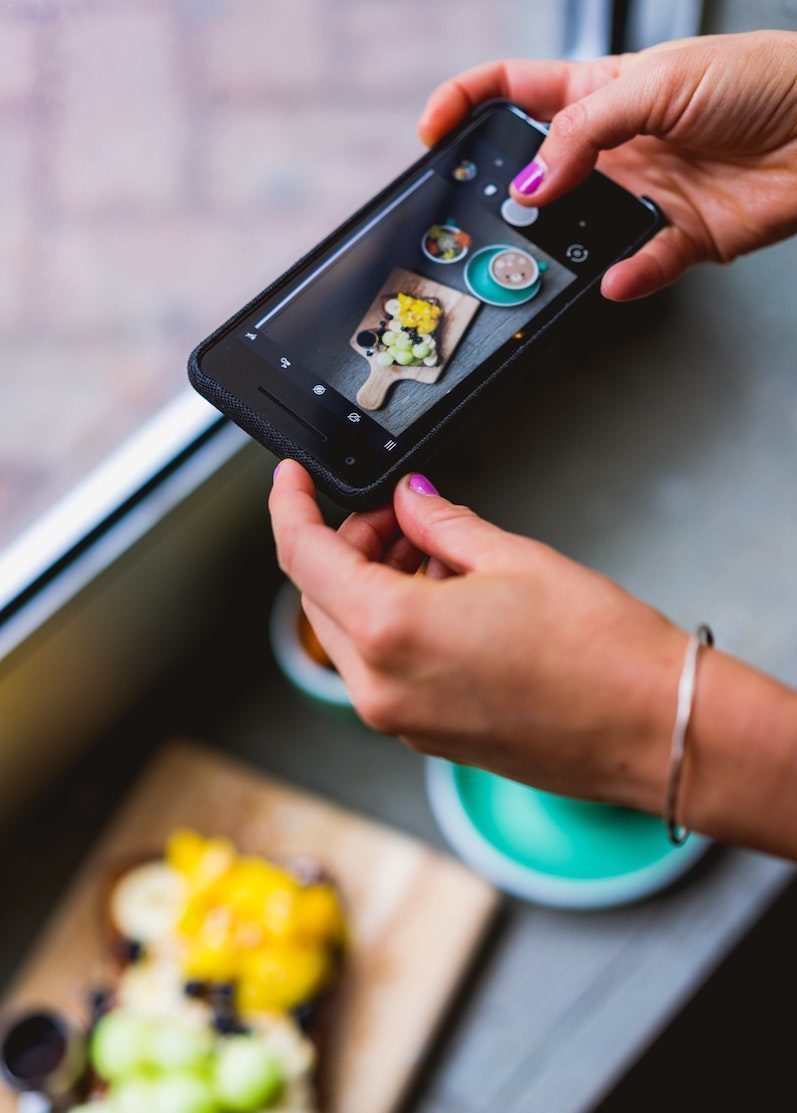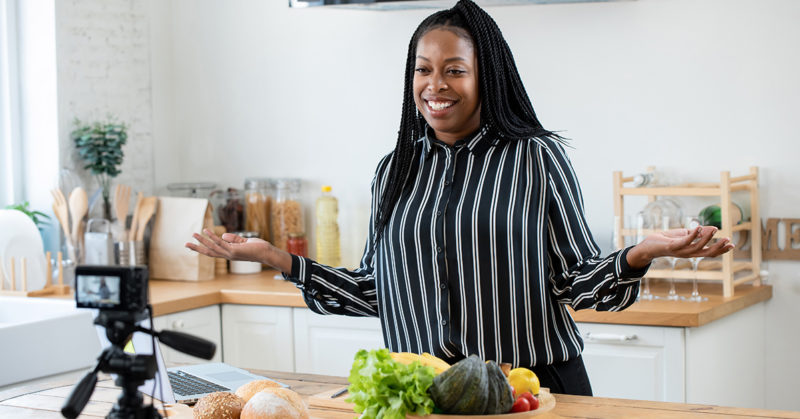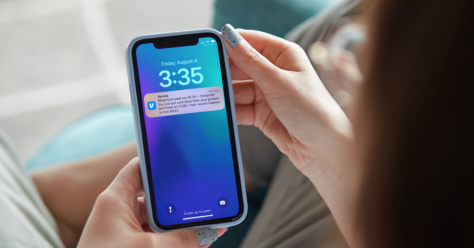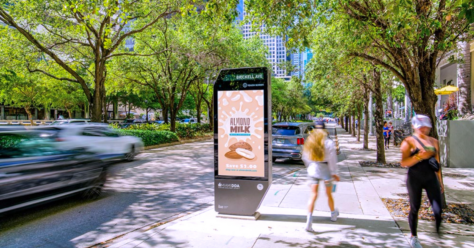Influencer Social Media Strategies for Brands
Influencers have been a hot topic for years but due to the pandemic, an increased amount of time spent at home and new platforms like Tik Tok, online content creators are being turned to for advice and entertainment more and more.
Continue reading to discover what an influencer truly is, the difference and benefits of various levels of online content creators and our influencer strategies for brands.
Who or What Is an Influencer?
Influencers are online personalities and experts who have acquired a dedicated following. Influencers have a range of followings, from celebrity influencers with millions of followers—such as Kylie Jenner, James Charles or Whitney Simmons—to micro and nano influencers with follower counts ranging from a couple thousand to 25,000.
To some people’s surprise, the largest accounts don’t tend to have the strongest connection with their audience base. In fact, a Later and Fohr report shows that micro influencers typically have the highest engagement rates at about 7%.
Influencers post on a range of platforms—such as YouTube, Instagram and Tik Tok—and typically create a community or niche based on the authentic content they share, such as comedy, beauty and lifestyle.




How Are Influencers and Marketing Related?
Since influencers form strong online communities, they are usually regarded as experts in their field and are looked to for advice. Brands reach out to influencers of all levels to trial, mention or endorse their products. A reference from an influencer can develop into a broader awareness and proof that a product is worth trying.
The New Word of Mouth
Word of mouth is frequently regarded as an incredibly powerful and trusted method for people to learn about new products and services from friends and family. In the digital age, word of mouth has translated to the influencer community as people feel close and connected to these individuals. When influencer marketing started to take off, it caught the attention of brands as an opportunity to expose relevant audiences to their product offerings.
Online followers trust content creators to recommend quality products so they don’t waste their money. Throughout the pandemic, consumers have sought value through trusted advice on the goods they purchase.
During COVID-19, brand loyalty has been at a low as people’s typical brand purchases have fluctuated in availability throughout the course of the pandemic. The past year has served as a perfect opportunity for brands to connect with new consumers who are searching for any product to fill their needs.



According to McKinsey, 75% of people have purchased through different stores, brands and websites during the pandemic. As people are spending more time at home, there is an increased need for household cleaning products, food and more. Many want to keep their environments tidy and sanitized as health is huge concern in the world. Also, as people have more time on their hands, they have picked up new hobbies like cooking. Many influencers have connected with their audience bases by pivoting their content to more lifestyle content which includes sharing recipes, organization and cleaning videos. Additionally, in light of the increased foot traffic and people having trialed new brands during the early months of COVID-19, now is the time to cement their loyalty with an influencer endorsement.
With the lower entry cost of CPG products, or the cost to purchase them, versus a car or luxury item, consumers are more likely to switch up the brands they purchase—especially when they usual choices aren’t available.
An endorsement from a trusted influencer can be reassuring to shoppers who are unable to find their typical products, or are just interested in trying new things, but also want to be wise with their money during these uncertain times.
The Recent Social Media Surge
Social media usage has increased over the past year as people have been following widespread shelter-in-place mandates. Not only have people been scrolling through familiar apps like Instagram, Facebook and YouTube, they also have made room for new trendy platforms like TikTok, Reels and Clubhouse. TikTok took off in popularity during the pandemic, since it was an ideal time for users at home with little to do to learn and interact with the platform—and it’s likely that its success will continue through the coming years.
Instead of new apps taking time away from other platforms, it seems as though people have made more room for social media. Social media and influencers have become a seamless way for brands to connect with consumers where they are in the past year and will likely continue into the future.
Social media and influencers have become a seamless way for brands to connect with consumers where they are in the past year and will likely continue into the future
Connecting with the Younger Demographic
Generation Z are the age group of people born after 1996. This makes them the first generation to be raised alongside technology their whole life, which is why these tech wizards are understood as “digital natives.” Even though Gen Z is incredibly comfortable online, millennials are also connecting online at higher rates currently. A recent COVID-19 study revealed that 18–35-year-olds have increased their usage of Facebook, Instagram and WhatsApp by 40% or more. Meaning, if brands are looking to connect with the demographic, online is certainly a great place to find them.
Additionally, with platforms like Snapchat offering short news updates, Twitter’s low character count, quick video updates through story features on nearly every platform and snappy cooking videos on Facebook and Instagram, attention spans are shortening.
People, and especially Gen Z and younger audiences, enjoy quick content—which also explains TikTok’s massive popularity. Although Gen Z enjoys learning online, making information accessible and easy to digest is key. To reach Gen Z, brands can collaborate with influencers to create quick, creative or entertaining nuggets of information while linking to places where they can go for more information.









Amplifying Engagement through Smaller Communities
One may think the best way to reach the largest audience is through the largest influencers. Not only would that potentially be an incredibly expensive tactic but it is also not entirely important to the younger crowds. According to a Morning Consult survey, only 10% of Americans consider a large social media following to be deciding factor if they follow a specific influencer.
On top of that, younger audiences prefer individuality and discovering their niche in online communities—meaning brands should consider a micro influencer strategy when targeting audiences.
Online Authenticity
People have witnessed, and Gen Z is especially perceptive to, the whole influencer wave—from the early days of micro influencers who were happy to trade free products for coverage on their blog and social channels to the influencer marketing industry of today, where influencers can achieve celebrity-like status and lucrative deals with major household brands.
One side effect of witnessing the evolution of everyday influencers into stylized and heavily idealized celebrities? Instagram has tested a new “hidden likes” format in an effort to promote mental wellbeing online and avoid promoting an unhealthy comparison mindset. Instagram is testing this model in response to the negative side effects on mental health that the competitive atmosphere online is having on Gen Z and beyond.
Today, consumers crave authenticity and look for social accounts that portray this through relatability. To create an authentic online brand image, advertisers can do a number of things—like leveraging micro influencers who combat unrealistic standards by offering a more intimate community online that fosters engagement.
Interested in our influencer strategies for brands or how to connecting with consumers through authentic and trustworthy content creators? Contact us at communications@quotient.com to get started.



